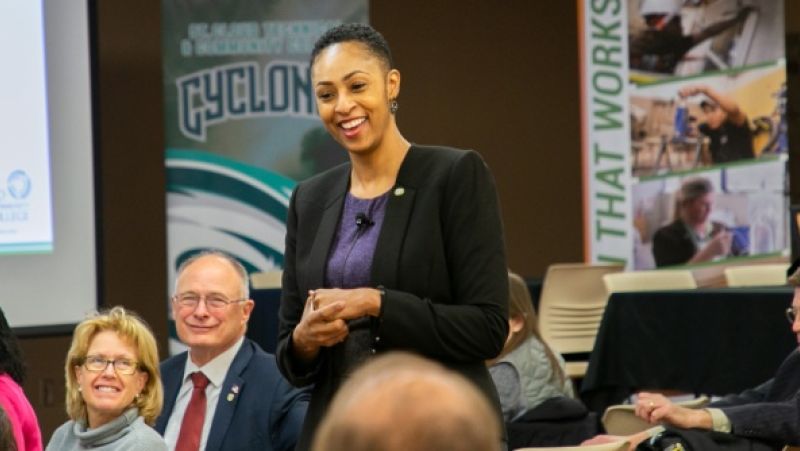
After six months of listening to college stakeholders, President Annesa Cheek gave a report to the community on Jan. 10 about SCTCC’s steps forward during “Framing Our Future.”
The results from her engagement and surveys affirmed that much of the community wants more from SCTCC. The college needs to expand its reach, create more partnerships, and provide more solutions to keep up with the Central Minnesota community’s need for graduates and skilled workers.

While part of a shortage of workers is out of SCTCC’s control, like declining numbers high school graduates, there is much that the college can do to provide not only industry with the workers they need, but also future students with a path to success.
A college degree is proven to provide a way for people to get better jobs, but the surprising thing is that nationally, only 47% of adults age 25-64 have some level of post-secondary education. In Minnesota, that number is higher: 54%. But when you focus on the five-county area that SCTCC provides the numbers are lower than national levels: Benton county at 40%; Morrision county at 32%; and Sherburne, Stearns, and Wright counties at 43%.
Minnesota is third in the country in its percentage of adults with a post-secondary degree, and the Minnesota Legislature wants to make this state the best. In 2015, the Legislature enacted a goal of reaching 70% post-secondary education attainment for ages 25-44, not only overall, but across all racial and ethnic groups.
The 70% goal is aggressive when looking at the current 54% rate Minnesota holds, but after noting the racial/ethnic disparities, there is a lot of opportunity for SCTCC. In Minnesota, the racial/ethnic breakdown for post-secondary degrees is: Asian at 63%; white at 61%; multiracial at 50%; black at 35%; Hispanic at 24%; and American Indian at 21%.
In Governor Tim Walz’s first official action to create a diversity, equity, and inclusion council, he said: “Disparities in Minnesota, including those based on race, geography, and economic status, keep our entire state from reaching its full potential.”
With growing minority populations in Minnesota and students of color concentrated at two-year institutions, President Cheek notes that now is not the time to sit back and consider our work done. By making equitable student learning outcomes an institutional priority, SCTCC is working to be ready for the next steps.
This includes examining data and embracing best practices aimed at surfacing inequities.
In February, SCTCC is sending faculty, staff, and leadership to an Achieving the Dream conference to learn if that’s an appropriate pathway for our students and their success. Currently, three Minnesota State colleges are Achieving the Dream colleges.
SCTCC also needs to examine the services it provides to students to address hurdles they encounter while attending, whether it’s in their academic or personal lives. It also means making sure relationships are a central focus.
“Recruitment is really about relationship building and building trust,” said President Cheek. “That’s where it starts with any kind of relationship building. It is about respecting the idea of the human-ness and making those connections.”

In addition, response from inside and outside the college indicates that embracing the “And” is important. SCTCC students not only have the opportunity to attain a technical degree, but also an associate of arts degree for transfer to a four-year institution. The college became comprehensive in 2010.
Balancing both types of students is important.
“Some of the collaborations inside the intuition between our liberal arts and technical faculty about how we can become much more integrated in our approach—we need to hold those partnerships up as models,” stressed President Cheek. “By celebrating those successes and showing how they’re helping students, we can really help both sides see themselves as a team.”
Student success is at the core of everything President Cheek learned during her first six months as president at SCTCC. The report to the college’s stakeholders really made it clear: By making education personal, accessible, and equitable, everyone—employers, community members, and especially graduates— wins.